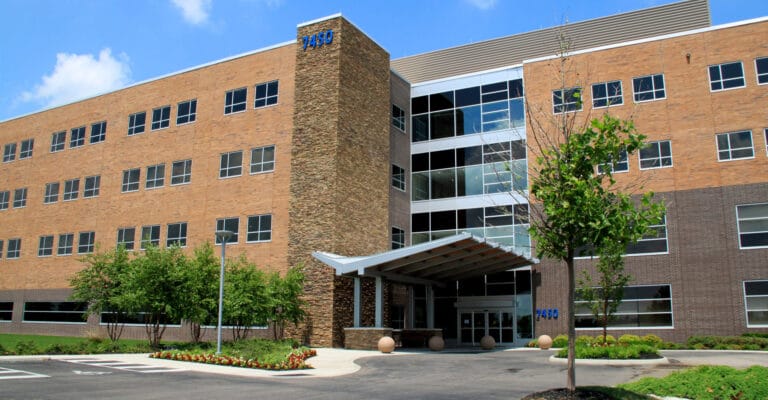A cesarean birth (C-section) is the delivery of a baby through an incision made through a mother’s abdomen and uterus. It was once thought that women who delivered their first child with a C-section must have all other births in the same way. However, we have technology that allows most mothers who have had a C-section to safely have a vaginal birth. This is called vaginal birth after cesarean (VBAC) delivery. Although it is now an option for many women, it still comes with risks. This page will help you learn about VBAC births and if it is right for you.
Why Some Patients Choose a VBAC
A vaginal birth after cesarean offers many physical and emotional benefits. In fact, between 60% and 80% of women who attempt VBAC are able to deliver vaginally. Women often choose VBAC because of the shorter recovery time and lower surgical risks.
Benefits of VBAC include:
- No abdominal surgery, which reduces future scar tissue formation
- Lower chance of infection compared to a repeat cesarean
- Shorter hospital stay and faster return to daily activities
- Decreased need for blood transfusions
- A higher likelihood of immediate skin-to-skin bonding and breastfeeding after delivery
In addition to physical benefits, some women find a sense of empowerment and emotional healing in giving birth vaginally after a previous cesarean.
Understanding the Risks of VBAC
While VBAC is generally safe for properly selected candidates, it does carry certain risks that need to be carefully considered.
The most serious risk associated with vaginal birth after cesarean is uterine rupture, where the cesarean scar on the uterus breaks open during labor. This rare but serious complication can pose risks to both mother and baby and may require emergency intervention.
Other VBAC risks include:
- Emergency cesarean during labor if complications arise
- Increased risk of infection if labor ends in cesarean after a prolonged attempt
- Possible injury to mother or baby in rare instances
At Columbus OB/GYN, we take every precaution needed to minimize these risks and will only recommend VBAC if we believe it’s a safe choice for you and your baby.
Who is a Good Candidate for VBAC?
Not every woman is a candidate for vaginal birth after cesarean. One of the most critical factors is the type of uterine incision made during your previous cesarean. The location and direction of this incision can affect the likelihood of a successful VBAC and lower the risk of uterine rupture.
Types of Uterine Incisions:
- Low Transverse Incision: A horizontal cut across the lower part of the uterus. This is the most common and safest type of incision for a future VBAC.
- Low Vertical Incision: A vertical cut in the lower uterus. This may be acceptable in some cases, though it carries a slightly higher risk than a low transverse incision.
- High Vertical (Classical) Incision: A vertical cut in the upper uterus. This type of incision is associated with a higher risk of uterine rupture and typically disqualifies a patient from VBAC.
It’s important to note that the skin incision from your previous cesarean is not always a reliable indicator of the type of uterine incision used, so prior surgical records will need to be reviewed.
Additional factors may include:
- A history of more than one cesarean birth with no previous successful vaginal delivery
- Certain underlying health conditions (e.g., heart disease, gestational diabetes)
- Placental complications (e.g., placenta previa or accreta)
- Large baby or small pelvis (cephalopelvic disproportion)
- Signs of fetal distress or irregularities during labor
If any of these factors arise, a planned or emergency C-section may be the safest option.
VBAC vs. Repeat C-section
When deciding between vaginal birth after cesarean and a planned repeat cesarean section, it’s important to compare the advantages and limitations of each option. VBAC offers a number of appealing benefits for many women. Beyond the faster recovery time and avoidance of major surgery, VBAC is generally associated with reduced risks in future pregnancies, especially when it comes to issues like placenta previa or placenta accreta, which are more likely to occur with multiple cesarean scars. Many women also seek the experience of vaginal delivery for emotional or personal reasons.
On the other hand, a planned repeat cesarean offers the benefit of predictability. Knowing the exact date and time of delivery can ease scheduling concerns and alleviate anxiety about labor. A C-section can also bypass the physical stress of labor, which may be preferable for certain medical conditions. However, compared to VBAC, recovery from a cesarean is usually longer and more physically demanding. Each woman’s situation is unique, and the decision should be based on health history, current pregnancy conditions, and personal preferences.
Your Personalized Delivery Decision
At Columbus OB/GYN, we believe that no two women—and no two births—are alike. That’s why we take a personalized approach when helping expectant mothers decide between VBAC and repeat cesarean.
We’re proud to have supported hundreds of women exploring VBAC in Columbus, Ohio. Our board-certified OB/GYNs will take the time to:
- Obtain detailed medical and surgical histories
- Evaluate your uterine incision and pregnancy health
- Monitor your baby’s development and wellbeing
- Discuss your preferences, expectations, and concerns
- Create a customized birth plan aligned with your values and safety
We provide care that’s collaborative, compassionate, and backed by advanced maternal-fetal technology. Your safety and your baby’s health always come first. Whether VBAC is the right path for you or not, our team will be with you every step of the way. From planning your delivery through postpartum care and beyond.
Is VBAC Right for You? Let’s Decide Together
Vaginal birth after cesarean in Columbus, Ohio, is a safe and effective option for many women. With proper screening, experienced care, and continuous monitoring during labor, VBAC can be a fulfilling and healthy birth experience. However, it’s important to understand both the benefits and risks associated with this method of delivery.
At Columbus OB/GYN, we are committed to empowering women with information and support to make the best choices for themselves and their families. If you’re pregnant and have had a previous cesarean, contact us today to schedule a consultation. Together, we’ll determine the safest and most rewarding path to welcoming your new baby.







